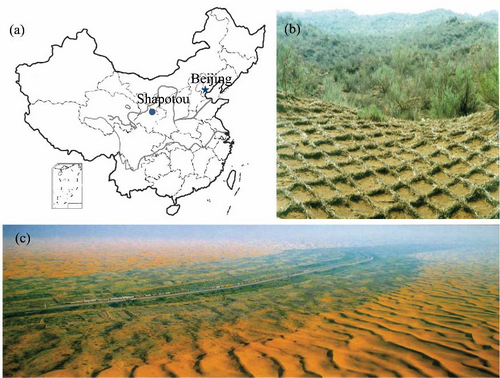The present study focuses on straw checkerboards established in the Shapotou Desert Research and Experimental Station at the southeastern edge of the Tengger Desert and their effects on the species richness and the abundance of Agriophyllum squarrosu Moq. Specifically, detailed analyses on the spatial distribution of A. squarrosum and the related soil properties were carried out at a small scale in the straw checkerboards.
A. squarrosum is an excellent pioneer plant for revegetation in desert areas. However, the distribution pattern of A. squarrosum and the influencing factors have not been sufficiently delineated.
The results showed that the species richness and the abundance of A. squarrosum were decreased exponentially from the border to the center of the straw checkerboards. At the micro-geomorphological scale, the soil texture, soil organic matter (SOM), soil nutrients (nitrogen, phosphorus and potassium), and soil infiltration rate in the topsoil tended to increase from the center to the border within a straw checkerboard, while soil moisture presented an opposite tendency.
The soil seed bank of A. squarrosum, soil bulk density, electrical conductivity, sand content, CaCO3 accumulation, and pH showed no significant difference (P>0.05) between the border and the center of the straw checkerboards.
Multiple linear regression analysis indicated that the abundance of A. squarrosum was mainly determined by the concentrations of SOM, nitrogen, and the infiltration rate, implying that nutrient acclimation was the optimal competitive strategy of A. squarrosum for surviving in a barren natural environment of an arid desert region.
This research achievement has been published on Journal of Arid Land.

Fig. The study site in the Shapotou region of the Tengger Desert, northern China (a); straw checkerboards used for stabilizing mobile dunes (b); and Shapotou sand-binding revegetation protective system (c) (Image by Lei Huang)





